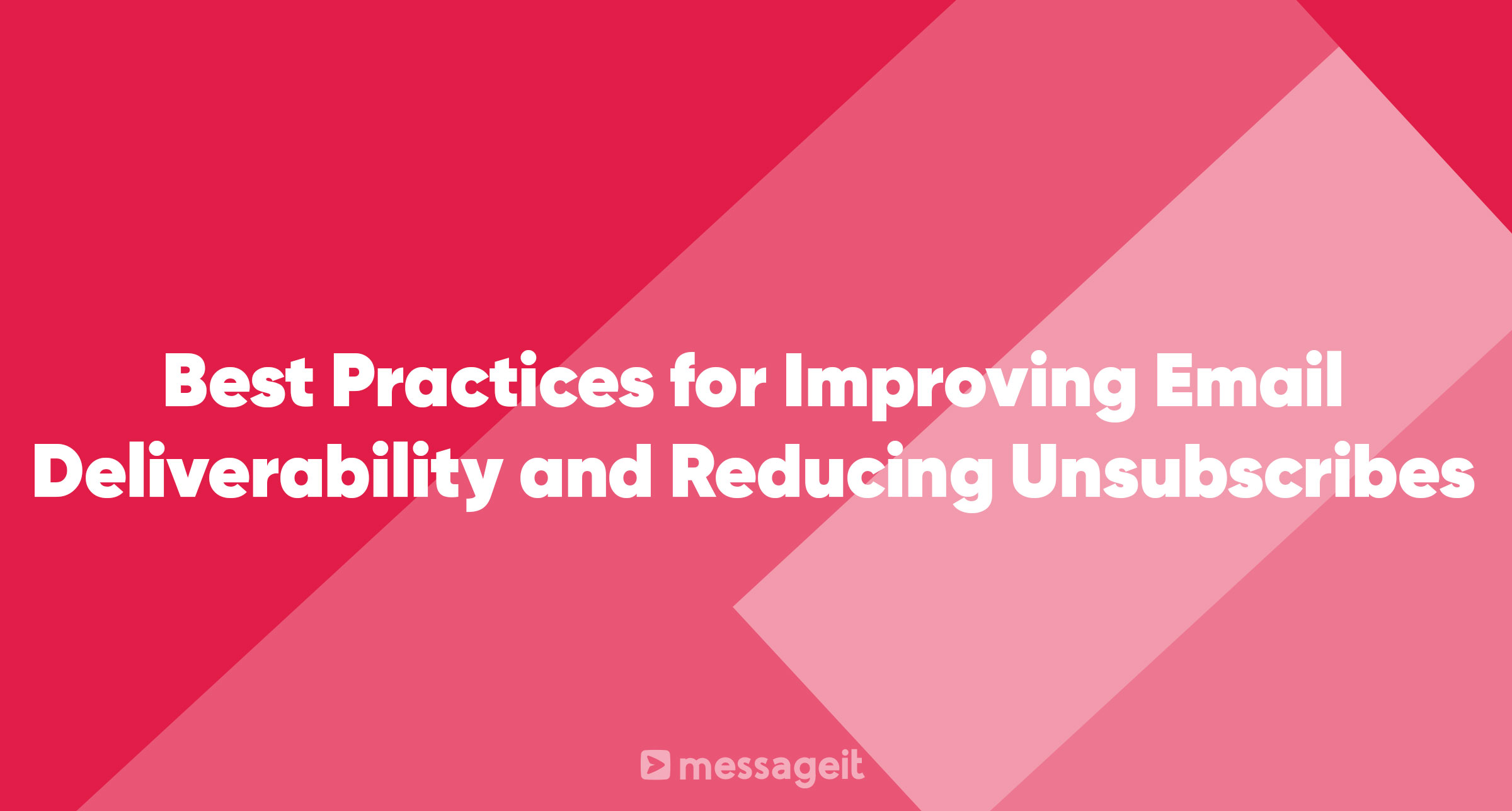Email marketing is a powerful tool, but its effectiveness hinges on email deliverability and subscriber engagement. High email deliverability ensures that your messages reach your audience, while low unsubscribe rates indicate that recipients find your content valuable. In this article, we will explore best practices to enhance email deliverability and reduce unsubscribe rates.
1. Build a Quality Email List
Start with a clean and permission-based email list. Avoid purchasing email lists or scraping email addresses from the internet. Instead, gather contacts organically through sign-up forms, opt-ins, and double opt-ins. A quality list is more likely to engage with your content.
2. Verify Email Addresses
Regularly verify and clean your email list to remove invalid and inactive email addresses. Tools and services are available to help you maintain a healthy list.
3. Segment Your Email List
Segment your email list based on user behavior, demographics, and preferences. Sending targeted content to specific segments increases relevance and engagement.
4. Personalization
Personalize your emails by addressing recipients by their names and tailoring content to their interests and past interactions with your brand.
5. Optimize Subject Lines
Craft compelling subject lines that entice recipients to open your emails. Avoid using spammy or misleading subject lines, as they can harm your sender reputation.
6. Mobile Optimization
Ensure your emails are responsive and mobile-friendly. Many people check their emails on smartphones, so mobile optimization is crucial for user experience.
7. High-Quality Content
Deliver valuable content that meets the needs and interests of your audience. Avoid spammy or overly promotional language.
8. Set Clear Expectations
At the point of sign-up, clearly communicate the type and frequency of emails your subscribers can expect. This reduces the likelihood of unsubscribes due to unexpected content.
9. Provide an Easy Unsubscribe Option
Make it easy for subscribers to opt-out of your emails. Compliance with regulations like CAN-SPAM and GDPR requires a visible and accessible unsubscribe link. Making it straightforward for subscribers to unsubscribe is better than having them mark your emails as spam.
10. Send Consistently
Maintain a regular and consistent email sending schedule. Erratic sending patterns can confuse subscribers and lead to higher unsubscribe rates.
11. Monitor Engagement Metrics
Pay attention to open rates, click-through rates, and conversion rates. Track which content resonates most with your audience and adjust your strategies accordingly.
12. Avoid Spam Triggers
Familiarize yourself with common spam trigger words and phrases and avoid using them in your emails. These include terms like "free," "discount," and "guarantee."
13. Authenticate Your Domain
Implement domain authentication mechanisms like SPF, DKIM, and DMARC to prove the legitimacy of your emails to internet service providers (ISPs).
14. Use a Reputable Email Service Provider (ESP)
Choose a reputable ESP that prioritizes deliverability and provides tools to maintain a healthy email list.
15. Monitor Blacklists
Regularly check if your domain or IP address is on any email blacklists. If it is, take steps to address the issues causing blacklisting.
16. Test Different Email Clients
Test your emails in various email clients and devices to ensure they display correctly and that links and images work as intended.
17. Maintain a Feedback Loop
If possible, set up a feedback loop with ISPs to receive notifications of spam complaints. Use this feedback to improve your email content and practices.
Conclusion
Email deliverability and unsubscribe rates are crucial factors in the success of your email marketing campaigns. By following these best practices, you can enhance your sender reputation, maintain subscriber engagement, and ultimately achieve better results from your email marketing efforts.
